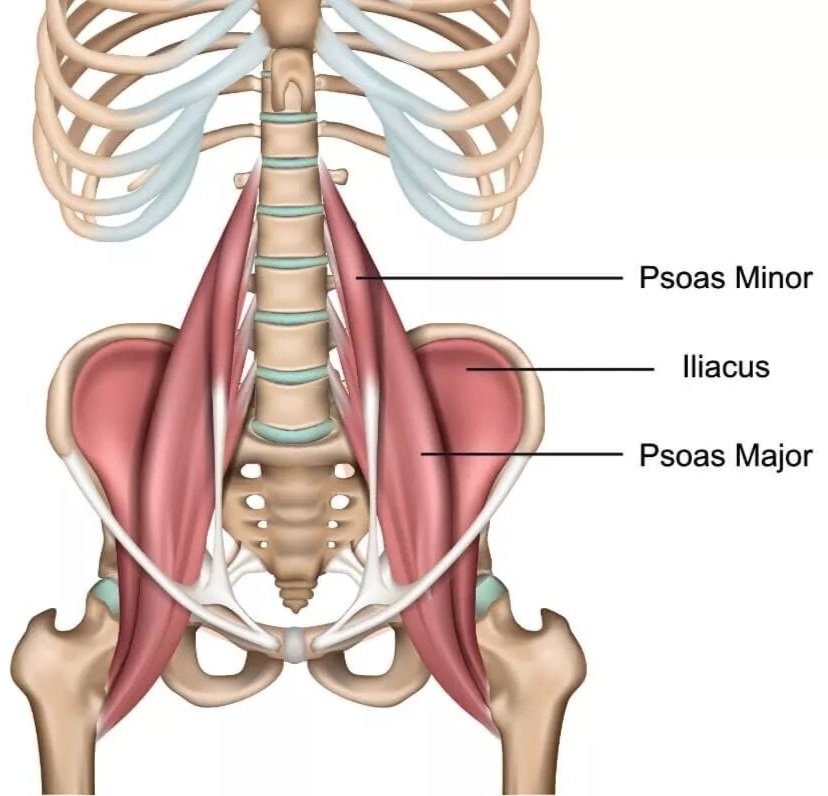Best at-home Psoas Release
Any links in this article may be associated with an affiliate account earning commission.
So, your massage therapist told you your psoas is super tight and you should focus on stretching it…..but how do I do that?
Your iliopsoas is a deep group of muscles that attach from your spine to your pelvis. Collectively, these muscles work together to flex the hip. Your iliopsoas group is comprised of your psoas major, psoas minor, and iliopsoas (pictured). Often, these muscles can become tight or shortened due to sitting for long periods of time, leading to potential back pain or tightness from your psoas literally pulling on your spine (ouch!).
Your psoas major is the most superficial muscle of the group, and the most targeted by massage therapists and physical therapists. A “psoas release” is a method clinicians use to physically dig their fingers or tools into the psoas muscle to release the tension being held there. This can often be a painful and uncomfortable treatment, to say the least; but it is the most proven method to attain significant possitive results.
All of us may not have access to a clinician who is able to do this treatment, or you may prefer to control the pressure yourself. Luckily, experts have come up with several home remedies to help relieve tension in these muscles that are so hard to get to. So, lets dive in.
The Pso-Rite is the most well-known version of the psoas release tool. Its simple design is easy to use and very effective. The prongs on this device are designed for you to lay on top, with the prongs directed towards your psoas muscle (just inside your hip bone). While this certainly doesn’t look comfortable, it is extremely effective!
LittleMum Deep Tissue Massager Psoas Release Tool
This tool is a little more multi-use than the pso-rite. It has a much different design which can be used on your psoas muscle, or can also be placed on your lower, upper or mid back to help target your rhomboids or QL. This company provides a video guide on how to properly use this tool, here.
If you’re on a budget, this is the best tool for you. It is adjustable to fit all individuals, it can be broken down for easy transport, and is a fraction of the cost of the other tools mentioned. This tool is also designed for you to be able to target knots and tension in virtually any larger muscles in your body.
Currently, these are the best options on the market for devices that can be used at home, specifically designed to reach your psoas muscle group. If you suffer from chronic back pain or hip stiffness, it is always recommended to first see someone who is qualified to diagnose your issues, but focusing on releasing your psoas may be the best move for you.
We’d love to hear from you! If you have any questions about this topic, or related topics, please send BodyWork an email here: rebecca.bodywork@outlook.com




